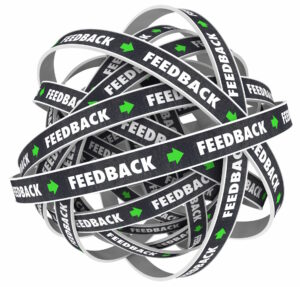Beyond Titles: Finding the True Solution to Delivering Customer Value
I find it interesting that the apparent down-cycle of Scrum Masters and Agile Coaches coincides with an apparent upturn in Project Management.
While correlation has its problems, this does suggest that these roles are being brought in to solve the same problem in companies, and they are all failing.
I will start by admitting that being an Agile Coach and Scrum Master biases me. That said, if you spend time in a conversation with me, you’ll rapidly realize that my status as an SPC has exerted very little bias on me, so there’s that.
The problem I think we have here is that these three roles all serve to solve different problems, and they are likely not the problems they’re being brought in for.
We’ll start with Project Managers. The problem we want them to solve is managing the various aspects of a project. We’ll define a project as an effort to deliver a specific outcome through a series of structured tasks, activities, and deliverables. (As per PMI.) The key here is that the outcome is specific, as are the steps to achieve said outcome. The Project Manager works to keep the project running according to plan. They manage changes and respond to challenges. In a perfect project management world, neither of these would exist, but we live in this world.
Next is the Scrum Master. Strictly speaking, the problem we want them to solve is coaching and guiding a Scrum Team, Product Owner, and Organization in the ways of Scrum. Scrum is a defined framework for delivering value through adaptive solutions for complex problems.
Finally, the Agile Coach. An Agile Coach solves the problem of a failing, flailing, or fledgling change in the way an organization provides value to its customers. (Maybe “solves the problem of an organization needing or wanting to improve how it provides value to its customers” is better, but I really like alliteration. 😁 ) This is often done via evaluating, training, coaching, and facilitating across all levels of the organization. It also tends to be more difficult as the scale of change in an organization grows.
In looking this over, first off, leave a comment below telling me that I’m wrong and why. We can discuss that in the comments and raise all the boats on our agile pond. Until then, though, I’m going to continue assuming I’m right. 😛
All this leaves me wondering, what problem are these organizations actually trying to solve? Based on the job descriptions I’ve seen for Scrum Masters over the years, I think they’re mostly trying to bring in project managers. Of course, project managers aren’t solving the actual problem, which is why they advertise for Scrum Masters, but the job description hadn’t really changed from when they had a project manager in the role. (It’s gotten better over time, but there are still a surprising number of Scrum Master roles describing project management among the responsibilities.) Scrum Masters aren’t solving the actual problem either, so now we’re stopping by Agile Coaches to fix our Scrum Masters before dropping both and going back to the known role of Project Managers. We’re on what, the third or fourth iteration of this cycle by now?
What I think is really going on is that companies know they have a problem. Some need a Project manager, some an Agile Coach, and some a Scrum Master. What they need changes over time as their context changes. Some get lucky and bring the right role in to solve their problem, but then their problem changes, and they miss that the original role solved a problem; this is a new one. Some keep throwing roles at the problem until it’s solved, or at least solved enough for now.
In today’s world, I suspect the path to providing better customer value needs all of these roles at one time or another. How does that help though?
The real root problem seems to be identifying what will best help a given company at a given time. What is their actual problem to solve? What will allow them to deliver better value? Deliver value faster? Deliver value more efficiently? Do they need to shift what they consider value?
The drive for immediate results often has CEOs and their teams chasing the latest trend, the most recent shiny business solution. This is great for those selling business solutions but bad for those aiming to help companies do and be better and the companies themsleves.
What we really need to do is step back and discover the problem we’re actually trying to solve, not throw a solution at the symptom we see. I would argue this is best done by listening to the people doing the work and bringing in an outside perspective to interpret what they’re reporting as opposed to reading the latest article and implementing what it tells you to.




















